Yonghao Fu
FSDP: Fast and Safe Data-Driven Overtaking Trajectory Planning for Head-to-Head Autonomous Racing Competitions
Mar 08, 2025Abstract:Generating overtaking trajectories in autonomous racing is a challenging task, as the trajectory must satisfy the vehicle's dynamics and ensure safety and real-time performance running on resource-constrained hardware. This work proposes the Fast and Safe Data-Driven Planner to address this challenge. Sparse Gaussian predictions are introduced to improve both the computational efficiency and accuracy of opponent predictions. Furthermore, the proposed approach employs a bi-level quadratic programming framework to generate an overtaking trajectory leveraging the opponent predictions. The first level uses polynomial fitting to generate a rough trajectory, from which reference states and control inputs are derived for the second level. The second level formulates a model predictive control optimization problem in the Frenet frame, generating a trajectory that satisfies both kinematic feasibility and safety. Experimental results on the F1TENTH platform show that our method outperforms the State-of-the-Art, achieving an 8.93% higher overtaking success rate, allowing the maximum opponent speed, ensuring a smoother ego trajectory, and reducing 74.04% computational time compared to the Predictive Spliner method. The code is available at: https://github.com/ZJU-DDRX/FSDP.
Learning to Race in Extreme Turning Scene with Active Exploration and Gaussian Process Regression-based MPC
Oct 08, 2024
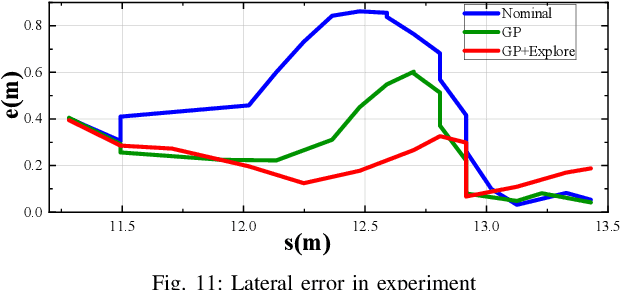
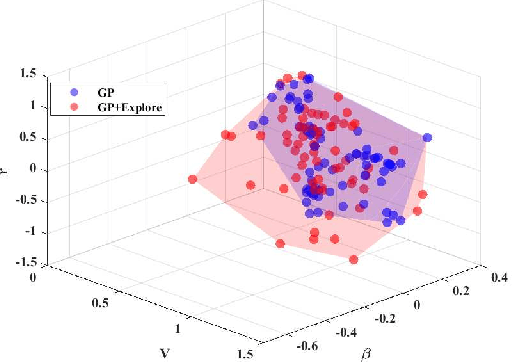
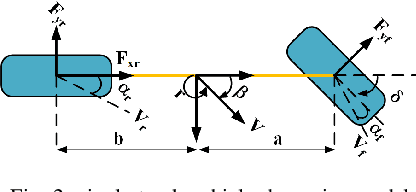
Abstract:Extreme cornering in racing often induces large side-slip angles, presenting a formidable challenge in vehicle control. To tackle this issue, this paper introduces an Active Exploration with Double GPR (AEDGPR) system. The system initiates by planning a minimum-time trajectory with a Gaussian Process Regression(GPR) compensated model. The planning results show that in the cornering section, the yaw angular velocity and side-slip angle are in opposite directions, indicating that the vehicle is drifting. In response, we develop a drift controller based on Model Predictive Control (MPC) and incorporate Gaussian Process Regression to correct discrepancies in the vehicle dynamics model. Moreover, the covariance from the GPR is employed to actively explore various cornering states, aiming to minimize trajectory tracking errors. The proposed algorithm is validated through simulations on the Simulink-Carsim platform and experiments using a 1/10 scale RC vehicle.
Random Walks: A Review of Algorithms and Applications
Aug 09, 2020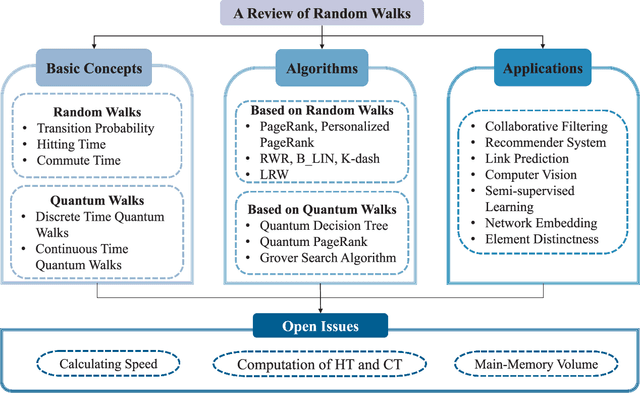

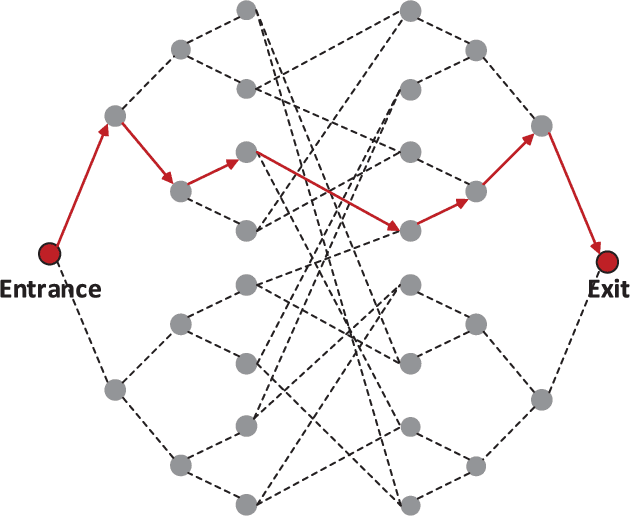

Abstract:A random walk is known as a random process which describes a path including a succession of random steps in the mathematical space. It has increasingly been popular in various disciplines such as mathematics and computer science. Furthermore, in quantum mechanics, quantum walks can be regarded as quantum analogues of classical random walks. Classical random walks and quantum walks can be used to calculate the proximity between nodes and extract the topology in the network. Various random walk related models can be applied in different fields, which is of great significance to downstream tasks such as link prediction, recommendation, computer vision, semi-supervised learning, and network embedding. In this paper, we aim to provide a comprehensive review of classical random walks and quantum walks. We first review the knowledge of classical random walks and quantum walks, including basic concepts and some typical algorithms. We also compare the algorithms based on quantum walks and classical random walks from the perspective of time complexity. Then we introduce their applications in the field of computer science. Finally we discuss the open issues from the perspectives of efficiency, main-memory volume, and computing time of existing algorithms. This study aims to contribute to this growing area of research by exploring random walks and quantum walks together.
* 13 pages, 4 figures
 Add to Chrome
Add to Chrome Add to Firefox
Add to Firefox Add to Edge
Add to Edge